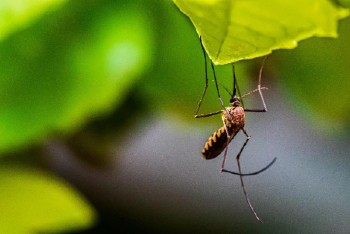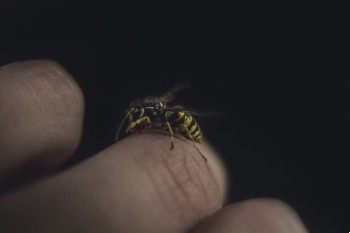The return of warmer weather is always accompanied by a rise in Canada’s insect population. The buzz of swarming bugs is frustrating for most people, but for those with severe allergies, insect bites are a real concern. Crawling insects such as ticks can harbour Lyme disease and endanger the health of all. Get the upper hand over bugs by knowing how to prevent insect bites, and the appropriate First Aid to deal with insect bites.

An ounce of prevention: Avoid the sting
To prevent insect bites, be sure to wear light colours, long sleeves, and pants. Tuck your pant legs into your socks to ensure your skin is covered and to block crawling ticks. Avoid the use of scented products and apply DEET-containing insect repellent according to the manufacturer’s instructions, avoiding the lips, eyes, or wounds/rashes.
First Aid: Beat the bite
For mosquitos, wasps and other stinging insect bites, check the ABCs (Airway, Breathing, Circulation), then remove the stinger by scraping across the skin. Try not to squeeze the stinger with tweezers. Wash the affected area thoroughly with soap and water, then monitor for signs of an allergic reaction. Cold compresses can be used for 15 minute intervals every hour to reduce pain and swelling. Remember to call 911 immediately for anyone experiencing difficulty breathing after being bitten by an insect.

Be Epi-Ready: Using an Epi-pen for severe allergic reactions
Severe allergies to insect bites and stings can result in life threatening reactions. You can help by administering Epinephrine by watching our video about how to use an Epi-pen.
Need a refresher on First Aid? Download our free First Aid app, which will guide you through the steps for many common First Aid scenarios.
Check it out: Tick Checks
Lyme disease is a tick-borne illness caused by the bacterium B. burgdorferi that can cause fever, fatigue, headache, and serious heart, joint, and neurological symptoms. A number of animals and birds can carry Lyme disease-bearing ticks long distances, so all Canadians should be aware of tick bite prevention and treatment procedures.
When hiking in the woods or areas with long grass or shrubs, walk in the middle of trails or paths. Upon returning indoors, do a full-body check for ticks, including the scalp, armpits and groin area. Having a warm shower can help wash away unlatched ticks and remove residual insect repellant from the skin. Be sure to check pets for ticks upon returning indoors, as they can carry ticks into your home which can then attach themselves to you or your family members.
Ticked off: Removal and First Aid tips for Ticks
If you spot a tick on the skin, try brushing it off - if it has started to burrow into the skin, grasp the head of the tick with tweezers or use a tick removal key. Once removed, wash well with soap and water and apply an antibiotic ointment. If you cannot remove the tick completely, seek medical attention.
Medical attention should also be sought if a round, red rash (13-18 cm across) or flu-like symptoms (fever, headache, weakness, joint pain) develop within a month of being bitten by a tick.
Related Stories:
Summer first aid: Watch out for ticks and Lyme disease
Summer first aid: The bugs are back.

